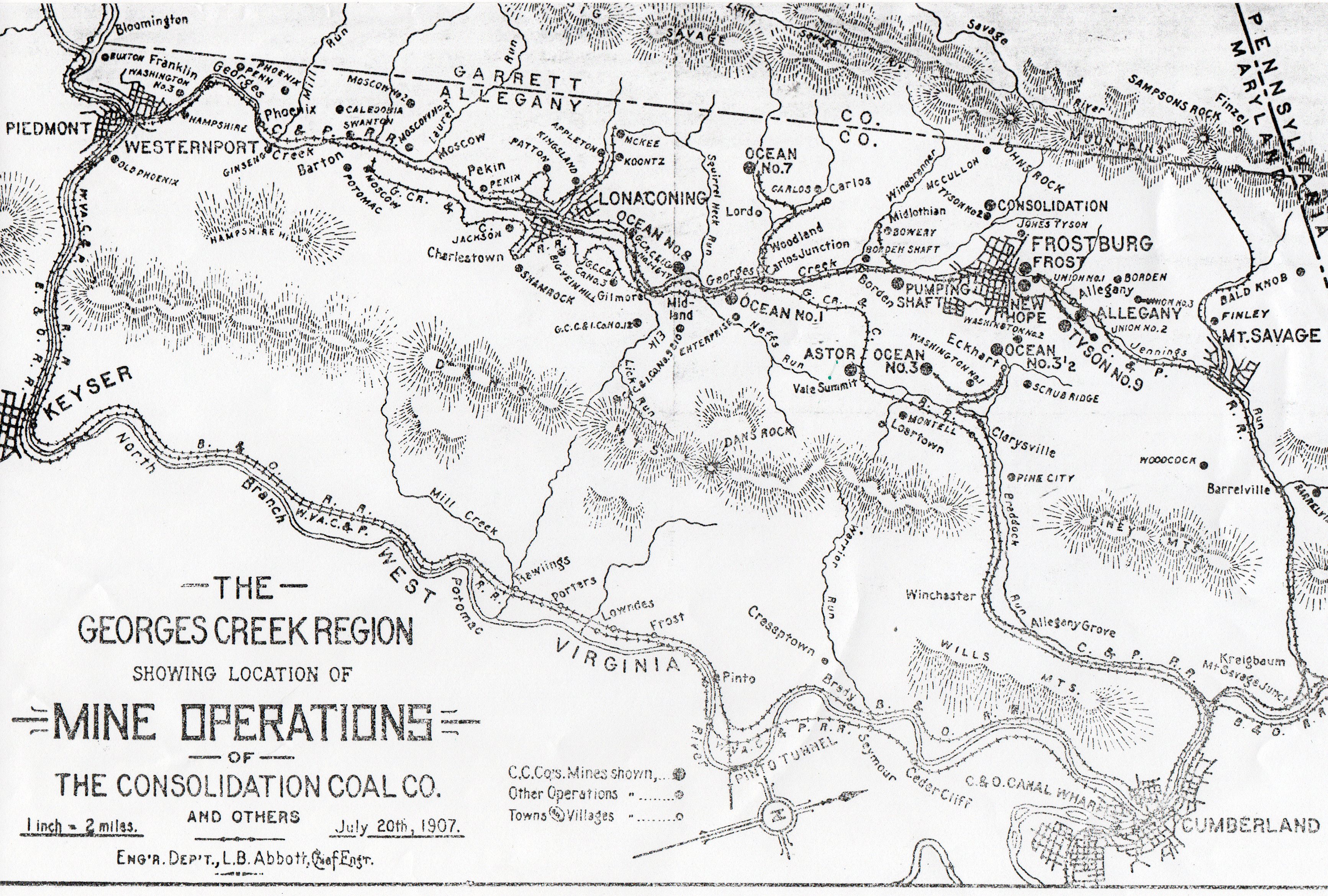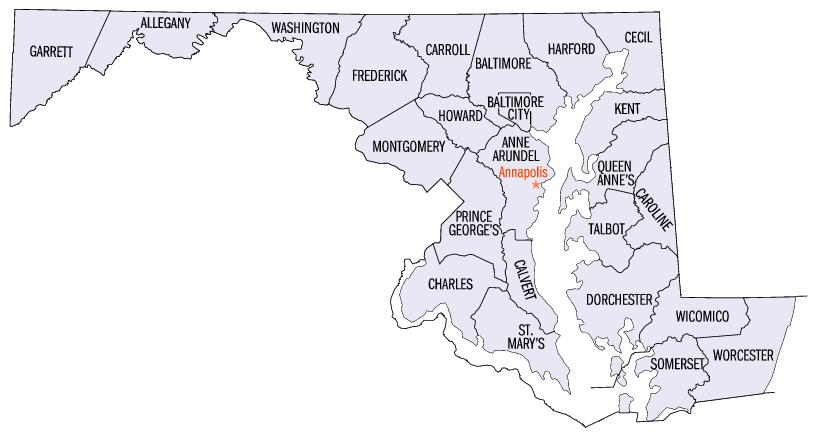|
Midlothian, Maryland
Midlothian is an unincorporated community and census-designated place (CDP) in Allegany County, Maryland, United States; at one time it was called ''Midlothian Junction''. As of the 2010 census it had a population of 320. Its ZIP code is 21543. Midlothian is located southwest of Frostburg and is adjacent to Exit 33 of Interstate 68. The community sits along the eastern base of Big Savage Mountain. The village of Midlothian was the site of the Bowery iron furnaces. These were two coal-fired furnaces built in 1868 by Cumberland Coal and Iron. There was a source of carbonate iron ore on the hill to the northeast, tapped by a tram road. Limestone was available from a hill to the east. The furnaces produced pig iron, and operated from 1874 to 1880. The pig iron was shipped by rail on the C&P via a spur line off the main. The product went to Cumberland. From Midlothian Junction, the C&P made a connection with a logging railroad. The Juniata Lumber Company established a circular saw ... [...More Info...] [...Related Items...] OR: [Wikipedia] [Google] [Baidu] |
Census-designated Place
A census-designated place (CDP) is a concentration of population defined by the United States Census Bureau for statistical purposes only. CDPs have been used in each decennial census since 1980 as the counterparts of incorporated places, such as self-governing cities, towns, and villages, for the purposes of gathering and correlating statistical data. CDPs are populated areas that generally include one officially designated but currently unincorporated community, for which the CDP is named, plus surrounding inhabited countryside of varying dimensions and, occasionally, other, smaller unincorporated communities as well. CDPs include small rural communities, edge cities, colonias located along the Mexico–United States border, and unincorporated resort and retirement communities and their environs. The boundaries of any CDP may change from decade to decade, and the Census Bureau may de-establish a CDP after a period of study, then re-establish it some decades later. Most unin ... [...More Info...] [...Related Items...] OR: [Wikipedia] [Google] [Baidu] |
2010 United States Census
The United States census of 2010 was the twenty-third United States national census. National Census Day, the reference day used for the census, was April 1, 2010. The census was taken via mail-in citizen self-reporting, with enumerators serving to spot-check randomly selected neighborhoods and communities. As part of a drive to increase the count's accuracy, 635,000 temporary enumerators were hired. The population of the United States was counted as 308,745,538, a 9.7% increase from the 2000 census. This was the first census in which all states recorded a population of over half a million people as well as the first in which all 100 largest cities recorded populations of over 200,000. Introduction As required by the United States Constitution, the U.S. census has been conducted every 10 years since 1790. The 2000 U.S. census was the previous census completed. Participation in the U.S. census is required by law of persons living in the United States in Title 13 of the United ... [...More Info...] [...Related Items...] OR: [Wikipedia] [Google] [Baidu] |
Georges Creek Valley
Georges Creek Valley is located in Allegany County, Maryland along the Georges Creek. The valley is rich in wide veins of coal, known historically as "The Big Vein." Coal was once extracted by deep mines but is only mined today through surface mining. The Georges Creek Valley was once a major center for the US coal industry. History A series of small mining towns were founded along the Georges Creek Valley in the nineteenth century when coal was discovered in the region. This led mining companies in the valley to develop railroads for transporting the coal. Some of these railroads were merged into the Cumberland and Pennsylvania Railroad System between 1853 and 1870. A competing railroad, the George's Creek and Cumberland Railroad, operated in the valley between 1876 and 1917, followed by the Western Maryland Railway. Most of the original settlers to the Valley came in response to the abundance of jobs available in the coal mines. Many were Irish, but German, Scottish, ... [...More Info...] [...Related Items...] OR: [Wikipedia] [Google] [Baidu] |
Edinburgh
Edinburgh ( ; gd, Dùn Èideann ) is the capital city of Scotland and one of its 32 Council areas of Scotland, council areas. Historically part of the county of Midlothian (interchangeably Edinburghshire before 1921), it is located in Lothian on the southern shore of the Firth of Forth. Edinburgh is Scotland's List of towns and cities in Scotland by population, second-most populous city, after Glasgow, and the List of cities in the United Kingdom, seventh-most populous city in the United Kingdom. Recognised as the capital of Scotland since at least the 15th century, Edinburgh is the seat of the Scottish Government, the Scottish Parliament and the Courts of Scotland, highest courts in Scotland. The city's Holyrood Palace, Palace of Holyroodhouse is the official residence of the Monarchy of the United Kingdom, British monarchy in Scotland. The city has long been a centre of education, particularly in the fields of medicine, Scots law, Scottish law, literature, philosophy, the sc ... [...More Info...] [...Related Items...] OR: [Wikipedia] [Google] [Baidu] |
Big Savage Mountain
The two Big Savage Mountain (Maryland and Pennsylvania) summits are part of Savage Mountain. The peak of Big Savage Mountain in Maryland is High Rock, at 2986 feet.: Savage Mountain (PA)Big Savage Mountain (PA)Big Savage Mountain (MD)/ref> [Baidu] |
Interstate 68
Interstate 68 (I-68) is a Interstate Highway in the US states of West Virginia and Maryland, connecting I-79 in Morgantown, West Virginia, to I-70 in Hancock, Maryland. I-68 is also Corridor E of the Appalachian Development Highway System. From 1965 until the freeway's construction was completed in 1991, it was designated as U.S. Route 48 (US 48). In Maryland, the highway is known as the National Freeway, an homage to the historic National Road, which I-68 parallels between Keysers Ridge and Hancock. The freeway mainly spans rural areas and crosses numerous mountain ridges along its route. A road cut at Sideling Hill exposed geological features of the mountain and has become a tourist attraction. US 219 and US 220 overlap I-68 in Garrett County and Cumberland, respectively, and US 40 overlaps with the freeway from Keysers Ridge to the eastern end of the freeway at Hancock. The construction of I-68 began in 1965 and continued for over 25&n ... [...More Info...] [...Related Items...] OR: [Wikipedia] [Google] [Baidu] |
Frostburg, Maryland
Frostburg is a city in Allegany County, Maryland, United States, and is at the head of the Georges Creek Valley. It is part of the Cumberland, MD-WV Metropolitan Statistical Area. Located west of Cumberland, the town is one of the first cities on the "National Road", US 40, and the western terminus of the Western Maryland Scenic Railroad. Frostburg was originally called Mount Pleasant until 1820, when the government developed a postal service, and the town was renamed Frostburg. Since 1973, the city has been served by what is now Interstate 68. The City of Frostburg has an approximate year-round population of 8,075. The total population was 9,002 at the 2010 census. In addition, 5,400 students attend Frostburg State University, a public university within the University System of Maryland. Geography According to the United States Census Bureau, the city has a total area of , all land. Frostburg is located in the Allegheny Mountains on the eastern slope of Big Savage Mountain. ... [...More Info...] [...Related Items...] OR: [Wikipedia] [Google] [Baidu] |
Maryland
Maryland ( ) is a state in the Mid-Atlantic region of the United States. It shares borders with Virginia, West Virginia, and the District of Columbia to its south and west; Pennsylvania to its north; and Delaware and the Atlantic Ocean to its east. Baltimore is the largest city in the state, and the capital is Annapolis. Among its occasional nicknames are '' Old Line State'', the ''Free State'', and the '' Chesapeake Bay State''. It is named after Henrietta Maria, the French-born queen of England, Scotland, and Ireland, who was known then in England as Mary. Before its coastline was explored by Europeans in the 16th century, Maryland was inhabited by several groups of Native Americans – mostly by Algonquian peoples and, to a lesser degree, Iroquoian and Siouan. As one of the original Thirteen Colonies of England, Maryland was founded by George Calvert, 1st Baron Baltimore, a Catholic convert"George Calvert and Cecilius Calvert, Barons Baltimore" William Hand Browne, ... [...More Info...] [...Related Items...] OR: [Wikipedia] [Google] [Baidu] |
List Of Counties In Maryland
There are 23 counties and one independent city in the U.S. state of Maryland. Though an independent city rather than a county, the City of Baltimore is considered the equal of a county for most purposes and is a county-equivalent. Many of the counties in Maryland were named for relatives of the Barons Baltimore, who were the proprietors of the Maryland colony from its founding in 1634 through 1771. The Barons Baltimore were Catholic, and George Calvert, 1st Baron Baltimore, originally intended that the colony be a haven for English Catholics, though for most of its history Maryland has had a majority of Protestants. History The last new county formation in Maryland occurred when Garrett County was formed in 1872 from portions of Allegany County. However, there have been numerous changes to county borders since that time, most recently when portions of the city of Takoma Park that had previously been part of Prince George's County were absorbed into Montgomery County in 1997. ... [...More Info...] [...Related Items...] OR: [Wikipedia] [Google] [Baidu] |
Census-designated Place
A census-designated place (CDP) is a concentration of population defined by the United States Census Bureau for statistical purposes only. CDPs have been used in each decennial census since 1980 as the counterparts of incorporated places, such as self-governing cities, towns, and villages, for the purposes of gathering and correlating statistical data. CDPs are populated areas that generally include one officially designated but currently unincorporated community, for which the CDP is named, plus surrounding inhabited countryside of varying dimensions and, occasionally, other, smaller unincorporated communities as well. CDPs include small rural communities, edge cities, colonias located along the Mexico–United States border, and unincorporated resort and retirement communities and their environs. The boundaries of any CDP may change from decade to decade, and the Census Bureau may de-establish a CDP after a period of study, then re-establish it some decades later. Most unin ... [...More Info...] [...Related Items...] OR: [Wikipedia] [Google] [Baidu] |


.jpg)

